Carl E. Olson's Blog, page 157
April 12, 2013
Servant of God Fr. Emil J. Kapaun posthumously award the Medal of Honor
Chaplain (Captain) Emil J. Kapaun, Catholic priest and war hero, was posthumously awarded the Medal of Honor yesterday at the White House by President Barack Obama. The President's speech began by noting that this year marks the 60th 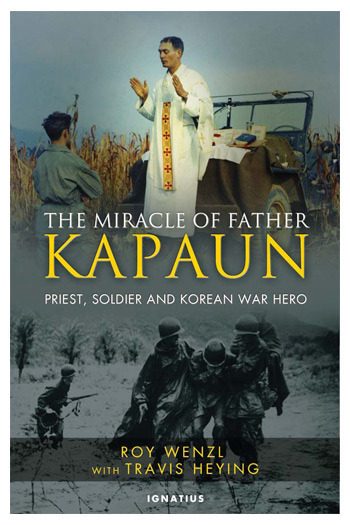 anniversary of the end of the Korean War,
anniversary of the end of the Korean War,
a time when thousands of our prisoners of war finally came home after
years of starvation and hardship and, in some cases, torture. And
among the homecomings, one stood out.
A group of our POWs emerged carrying a large wooden crucifix, nearly
four feet tall. They had spent months on it, secretly collecting
firewood, carving it -- the cross and the body -- using radio wire for a
crown of thorns. It was a tribute to their friend, their chaplain,
their fellow prisoner who had touched their souls and saved their lives
-- Father Emil Kapaun.
This is an amazing story. Father Kapaun has been called a shepherd
in combat boots. His fellow soldiers who felt his grace and his mercy
called him a saint, a blessing from God. Today, we bestow another title
on him -- recipient of our nation’s highest military decoration, the
Medal of Honor. After more than six decades of working to make this
Medal a reality, I know one of Father Kapaun’s comrades spoke for a lot
of folks here when he said, “it’s about time.”
Father, as they called him, was just 35 years old when he died in
that hellish prison camp. His parents and his only sibling, his
brother, are no longer with us. But we are extremely proud to welcome
members of the Kapaun family -- his nephews, his niece, their children
-- two of whom currently serve in this country's National Guard. And we
are very proud of them.
We're also joined by members of the Kansas congressional delegation,
leaders from across our armed forces, and representatives from the
Catholic Church, which recognizes Father Kapaun as a “Servant of God.”
And we are truly humbled to be joined by men who served alongside him --
veterans and former POWs from the Korean War. (Applause.)
And, a bit later:
This is the valor we honor today -- an American soldier who didn’t
fire a gun, but who wielded the mightiest weapon of all, a love for his
brothers so pure that he was willing to die so that they might live.
And yet, the incredible story of Father Kapaun does not end there.
He carried that injured American, for miles, as their captors forced
them on a death march. When Father Kapaun grew tired, he’d help the
wounded soldier hop on one leg. When other prisoners stumbled, he
picked them up. When they wanted to quit -- knowing that stragglers
would be shot -- he begged them to keep walking.
In the camps that winter, deep in a valley, men could freeze to death
in their sleep. Father Kapaun offered them his own clothes. They
starved on tiny rations of millet and corn and birdseed. He somehow
snuck past the guards, foraged in nearby fields, and returned with rice
and potatoes. In desperation, some men hoarded food. He convinced them
to share. Their bodies were ravaged by dysentery. He grabbed some
rocks, pounded metal into pots and boiled clean water. They lived in
filth. He washed their clothes and he cleansed their wounds.
The guards ridiculed his devotion to his Savior and the Almighty.
They took his clothes and made him stand in the freezing cold for
hours. Yet, he never lost his faith. If anything, it only grew
stronger. At night, he slipped into huts to lead prisoners in prayer,
saying the Rosary, administering the sacraments, offering three simple
words: “God bless you.” One of them later said that with his very
presence he could just for a moment turn a mud hut into a cathedral.
Read the entire address, or watch video of the presentation of the Medal of Honor:
Roy Wenzl, the co-author, with Travis Heying, of The Miracle of Father Kapaun
Priest, Soldier and Korean War Hero (Ignatius Press, 2013), was at the ceremony and will be sharing his thoughts about it on the Catholic World Report site next week. For more about the book, and the companion DVD, visit www.MiracleFatherKapaun.com.
April 11, 2013
Gripping drama sets a fictional stage for real-life problems with assisted suicide
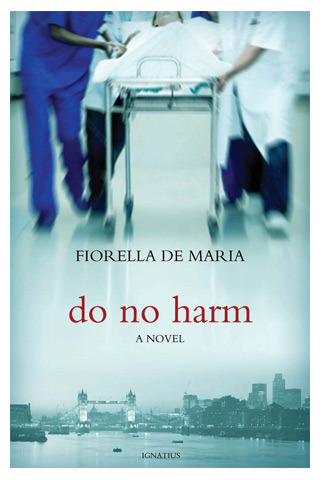 SAN FRANCISCO, April 11, 2013 – A riveting new novel by award winning author Fiorella de Maria, entitled Do No Harm (also available in electronic book format) tackles
SAN FRANCISCO, April 11, 2013 – A riveting new novel by award winning author Fiorella de Maria, entitled Do No Harm (also available in electronic book format) tackles
the controversial subject of assisted suicide. The story opens when a
British emergency room doctor saves the life a woman who apparently
attempted suicide. For saving her life, he is accused of committing a
crime and stands trial. Not only is Dr. Matthew Kemble’s medical
practice at risk, but also his liberty. If he is found guilty of
trespassing on a woman’s right to die, he could go to jail.
The novel Do No Harm
exposes the dangers faced by conscientious doctors in Britain. Dr.
Kemble’s decision to treat a patient in defiance of her Living Will pits
him against English Law, public opinion and his own profession. The
legal and personal battles he faces raise many questions about the role
of the physician in the modern world, contemporary beliefs about
autonomy and human rights, and the increasingly bitter clash of values
in twenty-first century Britain, as well as doctors in many countries in
the Western world.
Set
in and around London, the story explores the interrelated stories of a
physician facing ruin and imprisonment at the height of his career, his
old friend and doggedly determined lawyer, Jonathan Kirkpatrick, and
Maria, a passionate, dedicated but intensely lonely young campaigner who
while working for the defense proves incapable of staying out of
trouble herself.
Michael D. O’Brien, author of Father Elijah, calls Do No Harm “a
gripping drama of ordinary human beings caught in a web of ethical
confusions and moral complexities. It presents to us the razor’s edge of
conscience in an age dominated by relativism: What can people of good
will do when faced with layers of evil in contemporary society, evils
that present themselves as rational, legal, even ‘moral’? How do they
save life and bring hope to the hopeless – to do no harm, according to
the Hippocratic Oath? This novel is a biopsy of the sickness of late
Western society, and more importantly a sign that we are not abandoned
in the midst of it, and that good can triumph against all odds.”
Author Fiorella de Maria explains why she chose to write about this controversial topic,
“I wanted to expose the vulnerability of medical professionals in
Britain whose allegiance to the tenets of the Hippocratic Oath bring
them into conflict with the law. The reluctantly heroic Matthew Kemble
and the firebrand campaigner determined to defend him are in many ways
prophets unwelcome in their own country who – in spite of their vastly
different personalities – represent the conviction, decency and
isolation of those determined to stand for the truth in modern Britain.”
About the Author:
Fiorella de Maria
was born in Italy of Maltese parents. She grew up in Wiltshire, England,
and attended Cambridge, where she received a BA in English Literature
and a Masters in Renaissance Literature, specializing in the English
verse of Robert Southwell, S.J. She lives in Surrey with her husband and
her three children. She won the National Book Prize of Malta (foreign
language fiction category) for her novel The Cassandra Curse. Her first novel with Ignatius Press, Poor Banished Children, was released in 2011.
To request a review copy or an interview about this book with author Fiorella de Maria, please contact: Rose Trabbic, Publicist, Ignatius Press, (239) 867-4180 or rose@ignatius.com
Product Facts
Title: DO NO HARM: A Novel
Author: Fiorella de Maria
Release Date: March 2013
Length: 233 pages
Price: $19.95
ISBN: 978-1-58617-724-9 • Sewn Hardcover
Order: 1-800-651-1531 • www.ignatius.com
What Are Catholics To Do? (Part II)

What Are Catholics To Do? (Part II) | James Kalb | Catholic World Report
In the absence of agreement with the rest of society on human nature and the good life, Catholics must remain a sign of contradiction.
Last
month I noted that Catholics need settings in which they can lead a
Catholic life among Catholics. For most of us, loving God and living as
Christians take schooling and support, which we aren’t going to get from the
world at large. That may be one reason the Apostle Paul’s letters focus more on
the practical internal life of Christian communities than on evangelism. The
ultimate ideal may be the New Jerusalem, in which the distinction between the
Church and the World disappears, but we’re not likely to get there any time soon.
Still, those who object to
“fortress” or “ghetto” Catholicism have a point. Something of an inward focus
may be necessary, because today’s world is so much at odds with the Faith, and
we Catholics are not already everything we should be. It should not be
exaggerated, however. Christ told his followers to go out and teach all
nations, and love of neighbor means engagement with the world both individually
and socially.
But how do we engage the world
socially when Caesar—and the media—are
ever more powerful and anti-Catholic? During the Christian centuries, when
social leaders accepted Catholic Christianity as the norm, it was natural for
them to recognize the authority of the Church regarding matters on which she
has special competence. It was no odder for the king to accept Church authority
on faith and morals than it is today for a government to accept the authority
of the Universal Declaration of Human Rights, or defer to the National Academy
of Sciences on an engineering question.
Those days are past, and it is
less obvious today how the Church can play an effective social and political
role. People mostly aren’t Catholic, and social leaders are less so than most.
Vatican II, while reaffirming traditional doctrine on the duty of men and
societies toward the Church and the true religion, recognized that reality.
Ever since, Catholics have been trying to find practical ways to cooperate in
building a better social order in a setting that does not accept Catholic
doctrine as authoritative.
Cooperative efforts require
common ground, and the more complex and comprehensive the effort the more
common ground is needed. In the absence of agreement on the most fundamental
issues, Catholics have tried to base their cooperation with the extremely
complex and comprehensive activities of the modern state and other secular
actors on natural law.
Natural law can be developed
philosophically in various ways.
What Is Social Justice?

What Is Social Justice? | J. J. Ziegler | Catholic World Report
From Taparelli to John XXIII
(Part One of a three-part series)
Few terms have become as unmoored
from their Catholic origins, and have thus lent themselves to misunderstanding
in contemporary discourse, as has the term “social justice.” What does the term
mean when it appears in papal documents—particularly when it appeared in the
formative years of Catholic social teaching?
It is an important question, because
all of the Christian faithful, according to the Code of Canon Law, are “obliged
to promote social justice and, mindful of the precept of the Lord, to assist
the poor from their own resources” (Code of Canon Law 222 §2; Code of Canons of
the Eastern Churches 25 §2). Pastors of parishes are obliged “to foster works
through which the spirit of the Gospel is promoted, even in what pertains to
social justice” (Code of Canon Law 528 §1). It is also “desirable that the Catholic
faithful undertake any project in which they could cooperate with other
Christians, not alone but together, such as works for charity and social
justice” (Code of Canons of the Eastern Churches 908).
In his Church,
State, and Society: An Introduction to Catholic Social Doctrine (Catholic
University of America Press, 2011), J. Brian
Benestad of the University of Scranton notes that “a Jesuit philosopher by the
name of Luigi Taparelli D’Azeglio was the first to use the concept of social
justice in his major work, Saggio teoretico di
diritto.” Father Taparelli (1793-1862) served as rector of the Roman
College and helped found La CiviltÀ Cattolica, the
Italian Jesuit periodical.
“For Taparelli, social justice is not
a metaphor, nor the extension of virtue language to anthropomorphized
collectives,” Thomas C. Behr of the University of Houston said in a paper delivered in 2003
at the annual conference of the Pontifical Academy of St. Thomas Aquinas. According
to Behr, Taparelli held that social justice is distinct from both commutative
justice (defined
by the late Father John Hardon as “the virtue that regulates those actions
which involve the rights between one individual and another individual”) and
distributive justice (defined
as “the virtue that regulates those actions which involve the rights that
an individual may claim from society”).
April 10, 2013
20% off the new Father Kapaun biography and other recent releases

20% off the new Father Kapaun biography and other recent releases!
Offer ends April 16th, 2013 at 12:00 midnight EST | These prices are available online only through Ignatius.com
From farm boy to priest. From priest to soldier. From soldier to war hero. From war hero to saint?
Read all about the life of this remarkable man in The Miracle of Father Kapaun now available from Ignatius Press. Emil Kapaun,
the son of Czech immigrant farmers, lived an ordinary life in Kansas,
eventually becoming a priest and joining the military as a chaplain.
During the Korean War he was captured and imprisoned by Chinese
Communists. Kapaun has been hailed as a hero by veterans of all
religions for his selfless service to his fellow soldiers and is now a
candidate for sainthood. This Thursday, April 11, he will be posthumously awarded the Medal of Honor by the President of the United States.
Don’t miss the The World Over interview with Roy Wenzl, coauthor of The Miracle of Father Kapaun, airing live on EWTN on Thursday, April 11, 2013 at 8:00 eastern time!
Two Other New Bestsellers:
And, be sure to check out our other recent releases below, including Francis, Pope of a New World , now available in hardcover and American Church, by famed Catholic author Russell Shaw.
Northern California Catholic Men's Conference:
Finally, a "Last Call" reminder for all the men out there to register for the fabulous 8th annual Napa Valley Catholic Men's Conference. The conference, co-sponored by Ignatius Press, has an outstanding line-up of speakers this year, including Fr. Donald Calloway, MIC, a convert to Catholicism and author of the recently released Under the Mantle: Marian Thoughts from a 21st Century Priest, and Patrick Coffin, host of Catholic Answers Live, the #1 Catholic radio show in the country. Register by April 10 (today!) and save $10! Click here to register today!
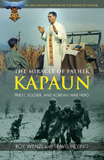 The Miracle of Father Kapaun
The Miracle of Father Kapaun
Roy Wenzl and Travis Heying
Emil Kapaun-priest, soldier and Korean War hero- is a rare man.
He is being awarded the Medal of Honor, the nation's highest military
award, and is also being considered by the Vatican for canonization as a
saint. In tracking down the story of Father Kapaun for the Wichita
Eagle, Wenzl and Heying uncovered a paradox. Kapaun's ordinary
background as the son of Czech immigrant farmers in Kansas sowed the
seeds of his greatness. His faith, generosity and grit began with his
family's humility, thrift and hard work. Lavishly Illustrated with 32
pages of Photos. Also available as an e-book
Regular price: $19.95, sale price: $15.96
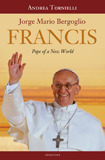 Francis: Pope of a New World
Francis: Pope of a New World
Andrea Tornielli
Who is Pope Francis, elected in one of the shortest conclaves in
history? This complete biography offers the keys to understanding the
man who was a surprise choice, even a kind of revolutionary choice, for
pope. It is the story of the humble pastor of one of the world's largest
archdioceses; a cardinal who takes the bus, talks with common folk, and
lives simply. It is the story of why the cardinal electors of the
Catholic Church set aside political and diplomatic calculations to elect
a pope to lead the renewal and purification of the worldwide Church of
our time. Also available as an e-book
Regular price: $19.95, sale price: $15.96
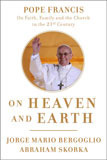 On Heaven and Earth
On Heaven and Earth
Jorge Mario Bergoglio & Abraham Skorka
From the man who became Pope Francis--Jorge Mario Bergoglio
shares his thoughts on religion, reason, and the challenges the world
faces in the 21st century with Abraham Skorka, a rabbi and biophysicist.
On Heaven and Earth, originally published in Argentina in 2010, brings
together a series of these conversations where both men talked about
various theological and worldly issues, including God, fundamentalism,
atheism, abortion, homosexuality, euthanasia, same-sex marriage, and
globalization.
Regular price: $22.00, sale price: $17.60
 American Church
American Church
Russell Shaw
Has the Americanization of American Catholics-their cultural
assimilation, that is-been a blessing or a curse for the Church in the
United States? In American Church Russell Shaw takes a
searching look at that question and reaches a disturbing conclusion.
Cultural assimilation, which was ardently championed by churchmen like
the great Cardinal James Gibbons of Baltimore around the turn of the
last century, has undoubtedly conferred many benefits on Catholics.
Their absorption into the secular culture of America, however, now
threatens the Catholic identity of millions of faithful and of their
institutions, such as schools, universities, and hospitals. Also
available as an e-book .
Regular price: $16.95, sale price: $13.56
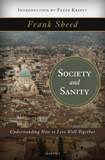 Society and Sanity
Society and Sanity
Frank Sheed
In this classic work, Society and Sanity, Catholic
thinker Frank Sheed brings his brilliant mind and lucid writing style to
bear on the good human society. By explaining perennial truths about
human nature based on the wisdom of Catholic social ethics, Sheed's book
is as pertinent today with our controversies about love, the nature of
marriage, the role of government, the relationship of law and morality
and of Church and State, and the duties of the citizen, as when he
penned the work over a half a century ago. Also available as an e-book
Regular price: $17.95, sale price: $14.36
 Jacob's Ladder
Jacob's Ladder
Peter Kreeft
There are ten important questions everyone should ask; and the
answers to these questions, which lead to ultimate truth, are a matter
of reason, not of faith. Well-known Catholic philosopher and writer
Peter Kreeft tackles each of these questions in a logical step-by-step
way, like climbing the rungs of a ladder. Because questions are best
answered by dialogue, Kreeft answers these fundamental questions in an
imaginary conversation between two very different people who meet at the
beach. Also available as an e-book
Regular price: $14.95, sale price: $11.96
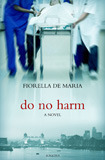 Do No Harm: A Novel
Do No Harm: A Novel
Fiorella de Maria Nash
The novel Do No Harm exposes the dangers faced by
conscientious doctors in Britain. Dr. Kemble's decision to treat a
patient in defiance of her Living Will pits him against English Law,
public opinion and his own profession. The legal and personal battles he
faces raise many questions about the role of the physician in the
modern world, contemporary beliefs about autonomy and human rights, and
the increasingly bitter clash of values in twenty-first century Britain.
Set in and around London, the story explores the interrelated stories
of a physician facing ruin and imprisonment at the height of his career,
his old friend and doggedly determined lawyer, Jonathan Kirkpatrick,
and Maria, a passionate, dedicated but intensely lonely young campaigner
who while working for the defense proves incapable of staying out of
trouble herself. Also available as an e-book
Regular price: $19.95, sale price: $15.96
 Shakespeare on Love
Shakespeare on Love
Joseph Pearce
Having given the evidence for William Shakespeare's Catholicism
in two previous books, literary biographer Joseph Pearce turns his
attention in this work to the Bard's most famous play, Romeo and Juliet. The Catholic understanding of sexual desire, and its need to be ruled by reason, is on display in Romeo and Juliet,
argues Pearce. The play is not a paean to romance but a cautionary tale
about the naïveté and folly of youthful infatuation and the disastrous
consequences of poor parenting. The well-known characters and their
oft-quoted lines are rich in symbolic meaning that points us in the
direction of the age-old wisdom of the Church.
Regular price: $14.95, sale price: $11.96
 Nothing to Hide
Nothing to Hide
Russell Shaw
Shaw, widely known Catholic writer, speaker and former
communications director for the U S Bishops, discusses the abuse of
secrecy in the Church, the scandals it has caused and the serious
problem of mistrust that exists in the credibility of the Church. Not
concerned with the legitimate secrecy that is necessary to protect
confidentiality and people’s reputations, Shaw is rather concerned here
with the stifling, deadening misuse of secrecy that has done immense
harm to communion and community in the Church in America. Also available as an e-book and audio download.
Regular price: $13.95, sale price: $11.16
 Good News, Bad News
Good News, Bad News
Fr. C. John McCloskey, Russell Shaw
Fr. John McCloskey has become a famous “convert maker” in the
powerful corridors close to the White House. Among well-known Catholic
converts instructed by Fr. McCloskey are Senator Sam Brownback,
publisher Alfred Regnery, Dr. Bernard Nathanson, journalist Robert Novak
and many others. This work is a joint effort of McCloskey and Russell
Shaw, the widely read Catholic author, speaker, and former
communications director for the U.S. bishops. Drawing on moving,
firsthand accounts of conversions, this book combines personal
testimony, solid theology, and effective methods of communicating the
Catholic Faith. Also available as an e-book
Regular price: $12.95, sale price: $10.36
DVDs
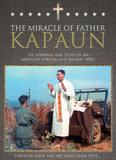 The Miracle of Father Kapaun
The Miracle of Father Kapaun
In this powerful documentary, learn the inspiring life story of
Father Emil Kapuan, his heroic work as a chaplain during battle, and his
leadership and comfort of fellow American prisoners after capture and
torture by the Communists. This imprisonment under incredibly harsh
conditions ultimately led to his death at 35 years of age in 1951. The
film features interviews with the soldiers who were imprisoned with
Kapaun in Korea, as well as with church officials, military historians
and the Kansas family who is convinced Kapaun’s miraculous intercession
saved their son’s life. A man of incredible courage and faith, he is
credited with saving the lives of hundreds of prisoners, instilling them
with hope when all hope seemed lost.
Regular price: $19.95, sale price: $15.96
Art
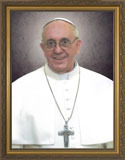 Pope Francis Formal Portrait 12"x16"
Pope Francis Formal Portrait 12"x16"
Celebrate the election of our new Holy Father, Pope Francis, with
this beautiful framed official portrait! This print is in a gold wood
frame with non-glare glass. Proclaim your faith and proudly display this
reminder of the head of Christ's Church on earth.
Regular price: $50.00, sale price: $40.00
Size 16"x20" also available
Regular price: $100.00, sale price: $80.00
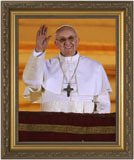 Pope Francis Arrives on Balcony Framed Image 12"X16"
Pope Francis Arrives on Balcony Framed Image 12"X16"
Celebrate the election of our new Holy Father, Pope Francis, with
this beautiful framed official portrait! This print is in a gold wood
frame with non-glare glass. Proclaim your faith and proudly display this
reminder of the head of Christ's Church on earth.
Regular price: $50.00, sale price: $40.00
Size 16"x20" also available
Regular price: $100.00, sale price: $80.00
Catholic World Report
Defending Marriage, and Why It Matters
By Jim Graves
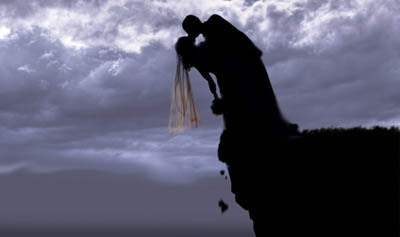
An interview with Ryan T. Anderson, co-author of What Is Marriage? Man and Woman: A Defense
Ryan
T. Anderson, 31, researches and writes about marriage and religious
liberty as the William E. Simon Fellow in Religion and a Free Society at
the Heritage Foundation in Washington, DC. He is also the editor
of Public Discourse, the online journal of the Witherspoon Institute in
Princeton, NJ. Anderson’s articles have appeared in numerous
periodicals, and he recently co-authored What Is Marriage? Man and Woman: A Defense (Encounter Books) with Robert George and Sherif Girgis. He recently spoke with CWR.. To continue reading, click here.
Homiletic & Pastoral Review
Glorious Wounds—Christ’s and Ours
By Fr. Andrew Hofer, O.P.
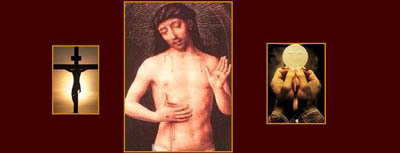
You
could say that Christ’s glorious wounds are our wounds. He took our
humanity to himself in the Incarnation … Christ’s humanity is completely
ours.
Central
to the mystery of the Christian faith is Jesus Christ’s suffering,
death, and resurrection, known collectively in modern times as the
“paschal mystery.” This unity can be most vividly seen in the glorious
wounds of the risen Lord. Christ, now raised from the dead, is the same
Christ who suffered and died upon the cross. Rather than effacing the
marks of the crucifixion, the resurrection glorifies them. These wounds
have special mention in some of the scripturally-recorded appearances of
the risen Lord. In Luke 24:39 (NAB), we hear Jesus say, “Look at my
hands and my feet, that it is I myself.” Jesus then showed the disciples
his hands and his feet (cf. Luke 24:40). Even more prominently, the
account in John 20:24-29 of the Apostle Thomas’s doubt and coming to
faith, through the invitation to probe Jesus’s hands and side, allows us
to probe the meaning of those glorious wounds. As we ponder them, we
can find out something not only about the risen Jesus, but also about
ourselves. To continue reading, click here.
Glorious Wounds—Christ’s and Ours

Glorious Wounds—Christ’s and Ours | Fr. Andrew Hofer | Homiletic & Pastoral Review
You could say that Christ’s glorious wounds are our wounds. He took our humanity to himself in the Incarnation … Christ’s humanity is completely ours.
Central to the mystery of the Christian faith is Jesus Christ’s
suffering, death, and resurrection, known collectively in modern times
as the “paschal mystery.” This unity can be most vividly seen in the
glorious wounds of the risen Lord. Christ, now raised from the dead, is
the same Christ who suffered and died upon the cross. Rather than
effacing the marks of the crucifixion, the resurrection glorifies them.
These wounds have special mention in some of the scripturally-recorded
appearances of the risen Lord. In Luke 24:39 (NAB), we hear Jesus say,
“Look at my hands and my feet, that it is I myself.” Jesus then showed
the disciples his hands and his feet (cf. Luke 24:40). Even more
prominently, the account in John 20:24-29 of the Apostle Thomas’s doubt
and coming to faith, through the invitation to probe Jesus’s hands and
side, allows us to probe the meaning of those glorious wounds. As we
ponder them, we can find out something not only about the risen Jesus,
but also about ourselves.
In his treatment of Christ’s resurrection, St. Thomas Aquinas asks in his Summa Theologiae III (q. 54. a. 4) whether Christ’s body should have risen with its scars. As always in the Summa,
Aquinas begins with objections, the best objections that can be
mustered against his own position. The first objection deals with how
wounds signify corruption and defect. In more modern language, perhaps
one could say that the wounds are gross. Isn’t the idea of someone
coming to life after death while bearing the wounds of his death
something from a horror film? Wouldn’t Jesus be more likely to say
“Someone is going to pay for this” than “Peace be with you”? The second
objection also is a matter of the gross factor: wounds destroy bodily
integrity. The body just isn’t whole if there are gaping slashes.
There’s something wrong, and it’s disgusting. The third objection runs
likes this. It might be permissible to retain some sign of the
crucifixion to confirm the faith of the disciples that he ,who was once
put to death on a cross, now lives. But, why in the world would he
continue to look like that? Since Christ’s body immediately after the
resurrection is how that body is forever afterwards, it’s not fitting
for him to rise with the scars from the crucifixion. The resurrection is
forever, so let’s think about the long-term appearance of the body,
particularly in what is to be the most glorified body of all. It
wouldn’t be right to look that way.
Now, Aquinas knows that Christ did rise with wounds, and so the fact
of Christ’s resurrected body having glorious wounds is the immediate
answer on whether or not that should have occurred. It, in fact, did
happen in God’s providence, and so we can then see how there was
fittingness by God’s design. Aquinas’ arguments of fittingness (ex convenentia) are arguments of beauty, and, perhaps, there’s nothing quite like the beauty of his answers for the glory of the risen Lord.
In the body of the article, Aquinas gives his first answer as the
first of five reasons coming from the Venerable Bede. Christ rose with
his wounds for his own glory. It’s not that Christ couldn’t heal his own
wounds, but that he wanted “to wear them as an everlasting trophy of
his victory.” I was once explaining this to a class of young African men
studying for the priesthood. I said that this idea of a trophy of
victory is like someone who has survived a fight, but who bears a scar
from a fight that he won. Rather than being some sort of embarrassment,
the scar is something that he shows off to his friends. One of the
African students quickly understood, and said that that was certainly
true in his own case. He survived a terrible fight, and he is proud to
show others what the fight did to his body. In the words of urban lingo,
he gets “street cred.” Jesus, you could say, has this “street cred.”
The Lord is able to show off—to have glory—for his victory over the
fight against death itself.
April 9, 2013
Defending Marriage, and Why It Matters

Defending Marriage, and Why It Matters | Jim Graves | Catholic World Report
An interview with Ryan T. Anderson, co-author of What Is Marriage? Man and Woman: A Defense
Ryan T. Anderson,
31, researches and writes about marriage and religious liberty as the William
E. Simon Fellow in Religion and a Free Society at the Heritage Foundation in
Washington, DC. He is also the editor of Public Discourse, the online journal of
the Witherspoon Institute in Princeton, NJ.
Ryan T. Anderson
He has emerged as a
leading defender of traditional marriage before audiences on college and law
school campuses, as well as in the mainstream media (he recently sparred with CNN host Piers
Morgan and lesbian financial advisor and motivational speaker Suze Orman, for
example).
Anderson was born
and raised in Baltimore, and, while he is Catholic, his parents sent him and
his four brothers to a Quaker school, “for reasons we still don’t fully
understand,” he chuckles. At an early age he found his views often at
odds with those of his classmates, such as on the issue of abortion. He
said, “Being in a minority status makes you examine your positions more thoroughly.”
Anderson’s articles
have appeared in numerous periodicals, and he recently co-authored What Is Marriage? Man and Woman: A Defense (Encounter
Books) with Robert George and Sherif Girgis. He recently spoke with CWR.
CWR: Why is marriage unique from other adult
relationships?
Anderson: As we argue in our book, it is unique
because it involves a union of hearts, minds, and bodies of a man and a woman,
at all levels of their beings, in an act that has the potential to produce new
human life. Marital relationships are not only emotional, but are ordered
towards bearing and rearing children.
If we reject the
understanding that marriage should be between one man and one woman, other
questions arise. Why, for example, should we limit marriage to two people?
What about “thruples” [a three-person “couple”]? What’s so magical
about the number two? Perhaps someone believes their marriage would be
enhanced with the introduction of a third party. If we don’t insist that
marriage is a distinct, bodily union between one man and one woman, then we
leave it up to the spouses to decide.
Also, why should
marriage be permanent? Emotions come and go, so some people might prefer
their marriage to be temporary.
CWR: Polls say younger people are more open to
same-sex marriage than the overall population. Why do you think many in your
generation have this perspective?
April 8, 2013
Revisiting Joseph Smith’s Novel History

Revisiting Joseph Smith’s Novel History | Joseph F. Martin | Catholic World Report
The underestimation of the divide between Mormonism and mainstream Christianity
It
is safe to say that when the Mormons built a fantastic, six-spired, gleaming
Mormon Temple outside of Washington, DC in 1974, not too many East Coasters
were familiar with the Church of Jesus Christ of Latter-Day Saints (LDS) story.
I recall gawking at the temple during a drive, as my brother’s Catholic friend
knowingly intoned that the gold figure topping the tallest spire represented
the angel Gabriel blowing his trumpet at the end of the world. To my
then-Methodist ears that sounded appealingly Evangelical. And of course it was
entirely wrong. But it was typical of how most people approached Mormonism,
interpreting their encounters with LDS believers with the assumption that they
shared a common Christian vocabulary and frame of reference with the group,
which, while maybe a bit separatist, had to be essentially like all the other
“denominations.”
In
the years since, thanks to Mormonism’s exponential growth and our accelerated
media culture, the LDS church has become far less of a mystery in many ways.
Stories of Joseph Smith’s vision and his digging up golden plates from which he
translated The Book of Mormon—essentially
an Incan reimagining of the New Testament—as well as Brigham Young’s trek
across the Rockies have become just another chapter in American lore. Mormons
tend to be outstanding people, salt of the earth—and with Western culture
rapidly secularizing, many Christians now are advocating that the LDS are
actually separated, albeit peculiarly so, brethren.
This
seems to be the take of Stephen Webb. In a fascinating piece for First Things (Feb. 2012), titled “Mormonism Obsessed with Christ,” he says
that for a large part of his teaching career, he did not try to
hide his condescension towards Mormonism. But, Webb writes, “I have come to
repent of this view, and not just because I came to my senses about how wrong
it is to be rude toward somebody else’s faith. I changed my mind because I came
to realize just how deeply Christ-centered Mormonism is.” Concerning The Book of Mormon, he says that while
it is “lackluster,”
it is dull precisely because it is all about Jesus. There are many
characters in this book, but they change as little as the plot. Nobody stands
out but him. “And we talk of Christ, we rejoice in Christ, we preach of Christ,
we prophesy of Christ, and we write according to our prophecies, that our
children may know to what source they may look for a remission of their sins”
(2 Nephi 25:26). … Every page of the book prepares the way for its stunning
climax, which is a literal appearance of Jesus to the ancient peoples of
America.
He
concludes: “The Book of Mormon raises
a question for Christians. Can you believe too much about Jesus? Can you go too
far in conceiving his glory? Let me answer that question by posing another.
Isn’t the whole point of affirming his divinity the idea that one can never say
enough about him? And if Smith’s stories are not true, aren’t they more like
exaggerations or embellishments than outright slander and deceit?”
New: "Shakespeare on Love" on Joseph Pearce
Now available from Ignatius Press:
 Shakespeare on Love: Seeing the Catholic Presence in Romeo and Juliet
Shakespeare on Love: Seeing the Catholic Presence in Romeo and Juliet
by Joseph Pearce
Having given the evidence for William Shakespeare's Catholicism in two previous books, literary biographer Joseph Pearce turns his attention in this work to the Bard's most famous play, Romeo and Juliet.
"Star-crossed" Romeo and Juliet are Shakespeare's most famous lovers and perhaps the most well-known lovers in literary history. Though the young pair has been held up as a romantic ideal, the play is a tragedy, ending in death. What then, asks Pearce, is Shakespeare saying about his protagonists? Are they the hapless victims of fate, or are they partly to blame for their deaths? Is their love the "real thing", or is it self-indulgent passion? And what about the adults in their lives? Did they give the young people the example and guidance that they needed?
The Catholic understanding of sexual desire, and its need to be ruled by reason, is on display inRomeo and Juliet, argues Pearce. The play is not a paean to romance but a cautionary tale about the naïveté and folly of youthful infatuation and the disastrous consequences of poor parenting. The well-known characters and their oft-quoted lines are rich in symbolic meaning that points us in the direction of the age-old wisdom of the Church.
Although such a reading of Romeo and Juliet is countercultural in an age that glorifies the heedless and headless heart of young love, Pearce makes his case through a meticulous engagement with Shakespeare and his age and with the text of the play itself.
Joseph Pearce is writer in residence and Visiting Fellow at Thomas More College in New Hampshire. He is the author of The Quest for Shakespeare and Through Shakespeare's Eyes and editor of the Ignatius Critical Editions of Romeo and Juliet, The Merchant of Venice, Julius Caesar, Hamlet, Macbeth and King Lear. His other books include literary biographies of Oscar Wilde, J. R. R. Tolkien, C. S. Lewis, G. K. Chesterton and Alexander Solzhenitsyn.
"Joseph Pearce's book on Romeo and Juliet stands like a lighthouse in the murk of modern literary criticism. His approach challenges the assumptions that govern popular 'scholarly' work on Shakespeare in our time. It is massively researched, convincing, intelligent, and (happily)interesting. I commend it highly to all possible readers."
- Thomas Howard, Author, Chance or the Dance?
Bergoglio and the Ultimate Questions
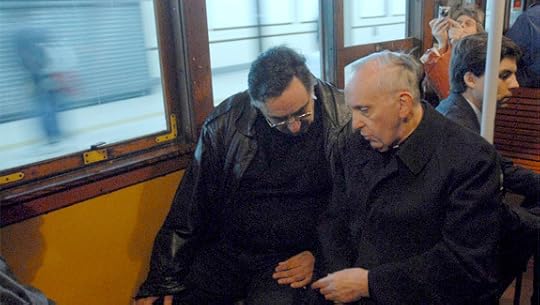
Bergoglio and the Ultimate Questions | Fr. James V. Schall, S.J. | Catholic World Report
A 2003 essay by Cardinal Jorge Mario Bergoglio reflects on modern man’s failure to pursue answers to life’s deepest questions
Someone sent me a book chapter entitled “For Man.” Its author was Jorge Mario Bergoglio. The book, Generative Thought: An Introduction to the Works of Luigi Giussani (Mcgill Queens University Press, 2003; edited by Elisa Buzzi), is an appreciation of Msgr. Luigi Giussani’s own book, The Religious Sense . Msgr. Giussani is the founder of Communion e Liberazione , a dynamic religious movement now found in some sixty countries. [Editor: Bergoglio’s chaper is available in PDF format on theCommunio website.]
What struck Bergoglio about Giussani’s influential book was that it hardly ever spoke of God, of any of the normal questions about his existence or meaning. Rather it was about man. Reminiscent of John Paul II’s Redemptor Hominis and many writings of Benedict XVI, the issue was the being of man—of whether he bore within himself the image of God, of the nature of human knowledge.
At the time this essay was written, John Paul II had just published Fides et Ratio. Bergoglio cites the famous beginning passage of this powerful document wherein John Paul lists the important questions about the meaning of human life and death, of evil and good, of our final destiny. Pope Wojtyla had noted that such questions are present in almost all human cultures and traditions, not merely in Christian ones. He concludes from this survey that these very questions reveal something basic about human nature. They must be asked and considered if we are to face what we really are.
Carl E. Olson's Blog
- Carl E. Olson's profile
- 20 followers



